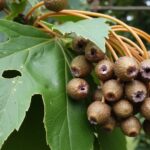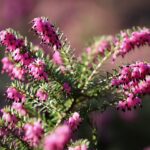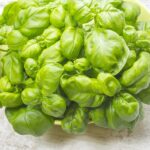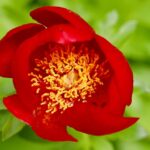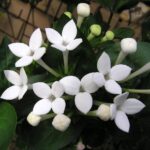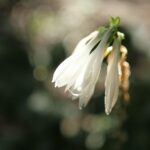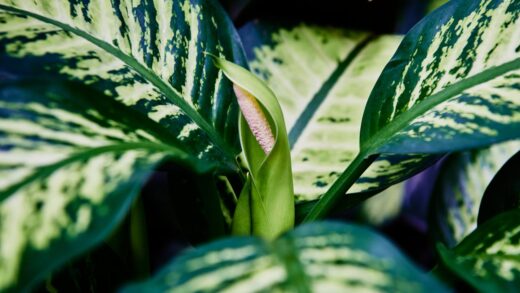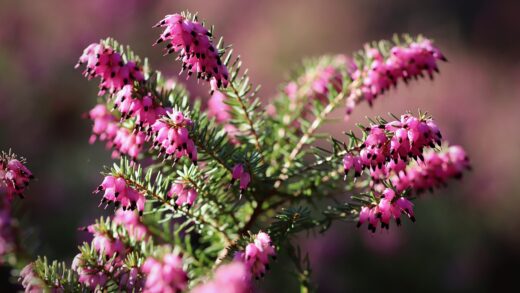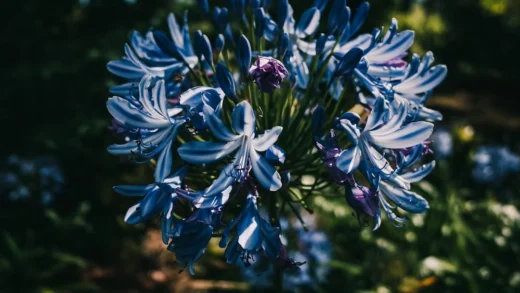Pruning is perhaps the most important maintenance task for ensuring a spectacular annual display from a Caryopteris shrub. This plant has a distinct blooming habit: it produces all of its flowers on the current season’s growth, commonly referred to as “new wood.” This means that without annual pruning to stimulate the production of new stems, the flowering would be sparse and confined to the tips of the old, woody growth. A proper pruning revitalizes the plant each year, encouraging a flush of vigorous new shoots that will be covered in the characteristic blue blossoms from late summer into autumn. This not only maximizes the floral display but also helps to maintain a compact, dense, and attractive shape.
The ideal time to perform this essential pruning is in the late winter or early spring. The exact timing can vary slightly depending on the climate, but a good rule of thumb is to wait until the harshest winter weather has passed but before the plant shows significant signs of new growth, such as swelling leaf buds. Pruning too early in the winter can expose the fresh cuts to potential damage from severe cold snaps. Conversely, waiting too long, until the plant has already leafed out, can waste the plant’s energy and may delay the onset of flowering.
The most effective and widely recommended method for pruning Caryopteris is a hard prune. This technique involves cutting back all of the stems from the previous year’s growth to a low framework, typically about 10 to 15 centimeters from the ground. While this may seem severe, the plant is extremely responsive to this treatment. From the remaining stubs and the crown, it will send up a multitude of strong new stems, resulting in a much fuller and more floriferous shrub than one that is left unpruned or only lightly trimmed.
For this task, it is important to use clean, sharp tools. A good pair of bypass pruning shears will work well for smaller stems, while loppers may be necessary for thicker, older wood. Making clean cuts is important for the health of the plant, as jagged or crushed cuts can heal more slowly and provide an entry point for diseases. This annual renewal pruning is the simple secret to keeping a bluebeard shrub looking its best year after year.
Why annual pruning is essential
The practice of annual pruning is fundamentally tied to the biology of how Caryopteris grows and flowers. Because it blooms on new wood, the previous year’s stems will not produce flowers along their length. If left unpruned, the shrub will continue to grow from the tips of the old branches. This results in an increasingly tall, woody, and open structure with flowers only at the very top. The base of the plant becomes bare and unattractive, and the overall shape is leggy and sparse.
Annual pruning effectively resets the plant’s growth each spring. By cutting it back hard, the gardener forces the plant to channel its energy into producing a brand-new framework of stems from the base. This results in a shrub that maintains a desirable compact and rounded habit. A well-pruned Caryopteris will be roughly the same size and shape each year, making it a predictable and reliable element in the garden design. This is particularly useful when using it as a low hedge or in a formal border setting.
Furthermore, this rejuvenation process leads to a healthier and more vigorous plant. The new stems that emerge after pruning are typically stronger and more numerous than those that would grow from old wood. This increased number of stems directly translates to a greater number of flowers, as each new shoot will terminate in a flower cluster. Therefore, the hard pruning not only controls the size and shape but also dramatically increases the quantity of the floral display.
In colder climates where Caryopteris often experiences winter dieback, the spring pruning serves an additional purpose. It allows the gardener to remove any wood that has been damaged or killed by the cold temperatures. In these regions, you can simply prune back to the point where you see healthy, live wood, or cut the entire plant back to a few inches from the ground, as any surviving buds are typically located near the base of the plant. This removes the dead material and encourages the strong new growth from the hardy crown.
The right tools and techniques
Using the appropriate tools is crucial for making pruning an easy and effective task that is healthy for the plant. For Caryopteris, the primary tools needed will be a sharp, clean pair of bypass pruning shears. Bypass pruners have two curved blades that pass by each other, much like a pair of scissors. This action makes a very clean, precise cut that does not crush the plant’s stems. Anvil pruners, which have a single blade that closes onto a flat surface, should be avoided as they can damage the plant tissue.
For thicker, more established stems that are too large for hand pruners, a pair of loppers will be necessary. Loppers are essentially long-handled bypass pruners that provide greater leverage, allowing for easy cuts through woody material up to a few centimeters in diameter. As with hand pruners, ensuring the blades are sharp is paramount. Dull blades can tear the stems, creating ragged wounds that are slow to heal and more susceptible to disease. It is also wise to clean the blades with rubbing alcohol before and after pruning, especially when moving between different plants, to prevent the spread of any potential pathogens.
The pruning technique itself is straightforward. The goal is to cut back each stem to a height of about 10 to 15 centimeters. When making the cuts, look for a pair of latent buds on the remaining stub. Making the cut just above a set of healthy buds can help to direct the new growth. For a very clean look, you can vary the height of the stubs slightly, which can help to hide the old wood as the new growth emerges, creating a more natural appearance.
After the pruning is complete, it is good practice to clear away all the clippings from around the base of the plant. This improves the aesthetics of the garden bed and also removes any material that could potentially harbor pests or diseases. A light application of compost around the base of the plant after pruning can provide a gentle boost of nutrients to support the flush of new growth that is about to begin.
Pruning in different climates
While the general principle of hard pruning in late winter or early spring remains consistent, the specific context can change slightly depending on the climate. In milder climates (USDA zones 7 and above), Caryopteris typically experiences very little, if any, winter dieback. The woody structure survives the winter fully intact. In this scenario, the gardener has full control over the pruning process, cutting the plant back to a low framework to stimulate new growth and maintain a compact form. The timing here can be a bit more flexible, anytime from late winter until the buds begin to break.
In colder climates (USDA zones 5 and 6), winter often does much of the pruning work for the gardener. The top growth is frequently killed back to the snow line or even to the ground. When it is time to prune in the spring, the task is primarily to remove this dead wood. You can start by cutting a stem and examining the cross-section. Live wood will typically be greenish or white on the inside, while dead wood will be brown and dry throughout. The goal is to cut back each stem to a point just above where this live tissue begins.
Often, in these cold zones, all the top growth will have been killed. In this case, the entire shrub should be cut back to about 5 to 10 centimeters from the ground. This may seem drastic, but the plant’s root system is the part that has survived, and strong new shoots will emerge from the dormant buds at the crown of the plant. This is why Caryopteris is often treated as a dieback perennial in the northern parts of its range. The result is the same: a fresh flush of new growth that will produce the season’s flowers.
Regardless of the climate, the one constant is that Caryopteris blooms on new wood. Therefore, some form of renewal pruning is always necessary to get the best performance. Whether the gardener is removing live wood to control the shape in a warm climate or removing dead wood after a cold winter, the outcome is to encourage the vigorous new shoots that will bear the beautiful late-season flowers.
Shaping and deadheading
Beyond the critical annual hard prune, Caryopteris requires very little in the way of additional trimming or shaping during the growing season. Its natural growth habit, when pruned correctly in the spring, is a pleasingly dense and rounded mound. However, if a particular stem grows much faster than the others and disrupts the symmetry of the shrub, it can be selectively trimmed back during the summer to maintain the desired shape. This is often referred to as “pinching back” if done on soft new growth.
Deadheading, the practice of removing spent flowers, is a common chore for many perennials to encourage reblooming. However, for Caryopteris, this is generally not necessary or particularly effective. The plant produces its main flush of flowers in a relatively concentrated period from late summer to early autumn. Removing the spent blooms does not significantly stimulate the production of a second wave of flowers. The energy of the plant is already shifting towards winding down for the season.
Furthermore, the spent flower heads, which develop into small, dry seed capsules, can add a subtle texture and interest to the plant’s appearance in the late autumn and into the winter. They can look quite attractive when rimmed with frost. These seed heads also provide a food source for small seed-eating birds, such as finches, adding another layer of ecological value to the garden. Since the entire shrub will be cut back in the following spring, there is no harm in leaving the seed heads in place through the winter.
In summary, the pruning regimen for Caryopteris is simple but crucial. It consists of one main event: a hard prune in late winter or early spring to stimulate the new growth on which the flowers are borne. This single task ensures a compact habit, a healthy plant, and a prolific floral display. Any other trimming during the year is minimal and purely for minor cosmetic shaping, making this a refreshingly low-maintenance shrub in the garden.
📷Agnieszka Kwiecień, Nova, CC BY-SA 4.0, via Wikimedia Commons

